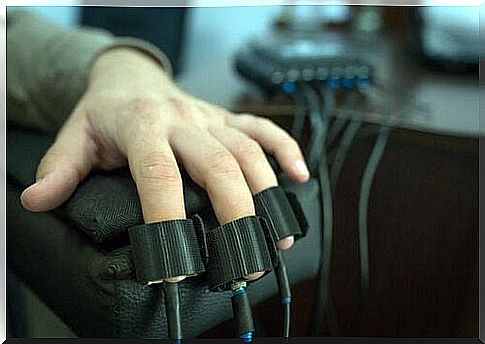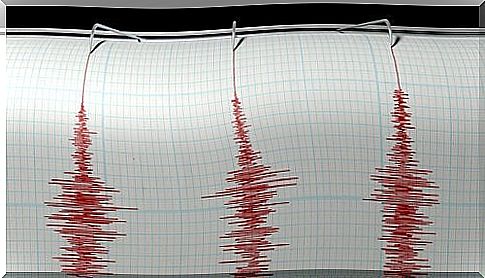The Polygraph: Is It As Effective As We Think?

The linguistic meaning of the polygraph comes from poly, which means “many”, and graph, which refers to graphics and writing. Therefore, we can say that the polygraph is the instrument that is responsible for generating many graphs at the same time. But what do these graphs measure? They simply determine the physiological response that the interviewer experiences.
The polygraph arose from the idea that emotions can manifest in the body’s response. For example, if I feel fear, the fear will result in sweating, increased heart rate and rapid breathing. Above all, the polygraph is mostly used on people who are suspected of having committed a crime. Law enforcement officials use it to determine whether the accused is telling the truth or lying under his testimony.
A short story about the polygraph
From the 1920s, people tried to make a machine that could detect deception. This is how we saw the birth of the polygraph. William Marston was responsible for creating the project. He created a cheat curve based on various blood pressure measurements. However, researchers did not accept the result of his lie detector as evidence. In fact, the scientific community did not approve of it as a legitimate procedure.
Later, Larson, a psychiatrist and Berkeley police officer, built a modified version of his predecessor’s lie detector. With this, he wanted to modernize the security forces and avoid the brutality the administrators would sometimes use to gain testimony. Along with blood pressure, he introduced another measure: the respiratory rhythm. He added this with the aim of increasing the accuracy of the results. Thus, in 1924, the police began to use the polygraph in their investigations.

However, this intermediate machine had to undergo even more developments to become what it is today. Keeler added to this progress. The new measurable variable Keeler added was electrodermal activity. Electrodermal activity means the extent to which our skin is able to conduct electricity. Researchers believed that doubt and lies increased the skin’s electrodermal activity. This physiological reaction is related to fear or anxiety.
How does the polygraph work?
There are two tests in the polygraph that are used frequently. The way they work is different. However, both are based on formulating questions with the aim of creating certain emotional changes in the suspect. The idea is to make the suspicion manifest emotions in physiological responses.
CQT (Control Question Test)
This is the most commonly used test. It has three different types of questions that the interviewer asks: irrelevant, relevant and control questions.
Irrelevant questions
These are questions that are not going to give us any important information. These are general questions that are not related to what the interviewer is investigating. The person being interviewed is not expected to show any kind of encouragement or activation when answering these questions.
Relevant questions
These questions are actually related to the survey. There are specific questions about the incident that happened. We should expect the answers to be negative (to give an affirmative answer, we assume to admit the facts). The culprit will experience a greater level of activity (both emotionally and physiologically).
Control issues
These are extremely ambiguous questions. They are very imprecise. The questions are meant to be impossible to answer in a negative way without doubting the answer itself. They mostly refer to very distant facts.
They do not have any kind of relationship to the case, but they can refer to things the person did some time ago, which could present similarity to the incident that happened. For example, if the crime was a murder, the interviewer asks if they have ever been injured in their lifetime. With this question, a guilty and innocent person will present the same level of encouragement.
The interviewer expects that an innocent person will present a greater level of activation during the control questions. As these questions are more ambiguous, they will be afraid to make a mistake when answering. In questions that are more relevant to the case, they answer with less activation because they had nothing to do with the crime. However, the culprit will show a higher activation under the relevant questions. This is because the body responds more to these types of questions than to the control questions.
GKT (Guilty Knowledge Test)
This is a test to test the knowledge of the sinner. It refers to the knowledge that the perpetrators have about the case. The interviewer asks several questions with several answer choices where only one answer is correct.
It is understood that culprits want to know which is the right choice to choose. They will present a greater excitement when the interviewer says the correct answer. The innocent, who knows nothing about the case, must, however, present the same level of activity in every opportunity. This is because they do not know what is right because they do not have knowledge of the subject. That way, the right answer must be fully recognizable to the culprit. But the innocent do not want to know what to choose.

The polygraph and limitations
Despite the fact that we have used the polygraph for many years, we can not ignore the fact that there are certain limitations that reduce the reliability of the machine. In 2003, the National Research Council created a report on the polygraph. It analyzed the psychological bases on which this instrument is based. It also looks at the procedures it follows. These are the researchers’ most important conclusions:
- Precision of the polygraph. The physiological responses measured by the machine do not only respond to deception. That is, there is a wide range of physiological responses that can appear physiologically in the same way that deception does. This greatly limits the accuracy of the machine’s measurements.
- Theoretical basis. The scientific theoretical bases on which the polygraph is based are very weak. The concept of fear and encouragement is not well defined. Because of this, polygraph measurements are not entirely reliable when generalizing these results to other populations and groups. In short, you can not generalize the data to other people who have not been examined.
- Accuracy of the evidence. The research in studies does not fit into the accuracy of the tests. In this case, the consequences of deciding whether a person is lying or not are very important. However, this lack of realism can lead to serious problems when it gives a high error rate when we consider innocent people.
- People use the polygraph when there is not strong enough evidence to charge a suspect, so that the results of the polygraph can in no way be compared.
- There are countermeasures that make it possible to lie to a polygraph. People have learned to control their physiological responses. They can manipulate the machine in a way that brings the results to their advantage.
Is it effective?
Although we have only pointed out a few limitations, the report points to many more. From this we can draw the conclusions that the polygraph is far from being completely reliable. This is very worrying if we think about the many fields that use polygraphs.
The truth is that the polygraph has several shortcomings. This should trigger an alarm, since using a method that does not ensure accurate results may increase the likelihood of convicting someone who is actually innocent.









